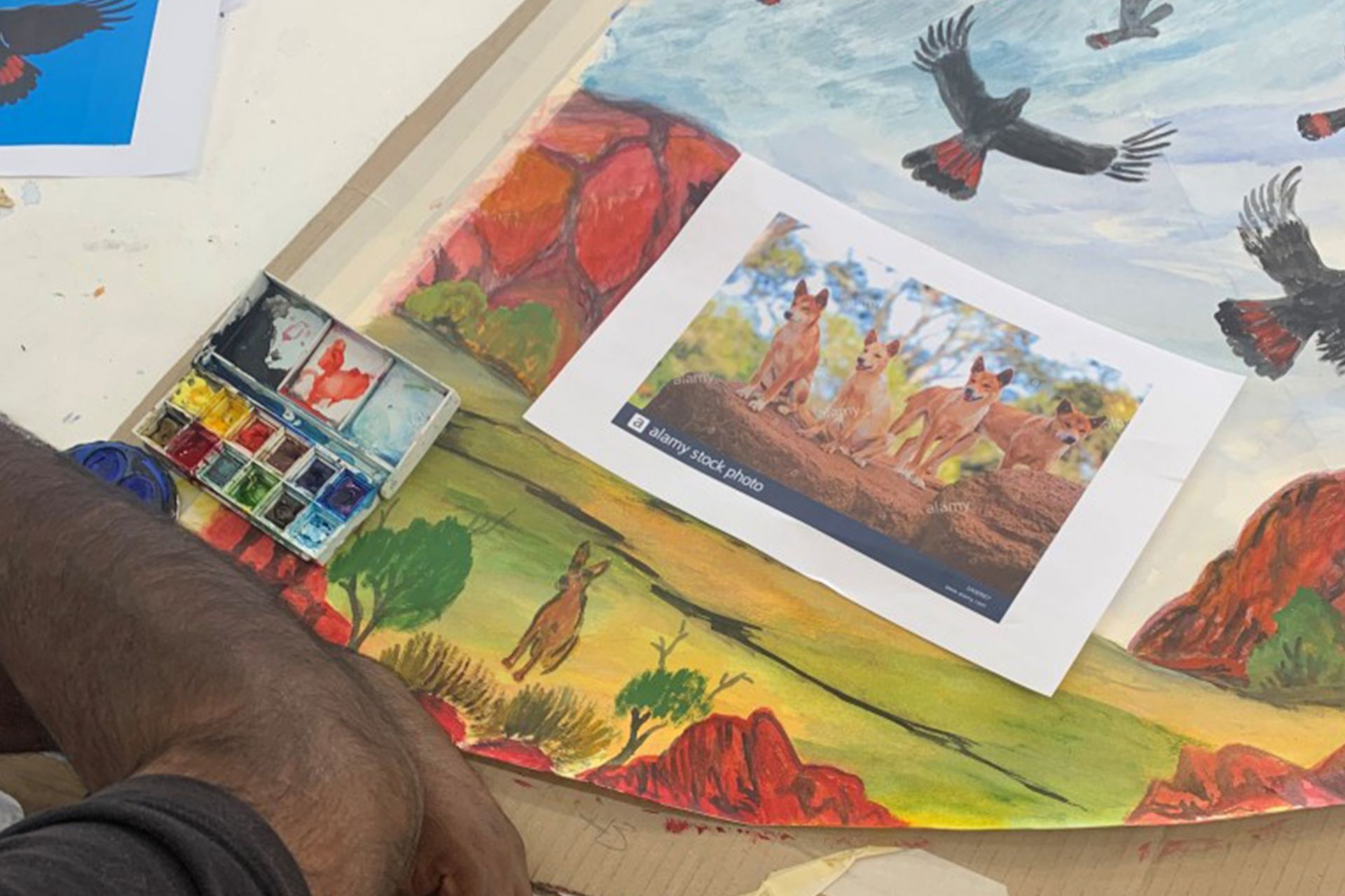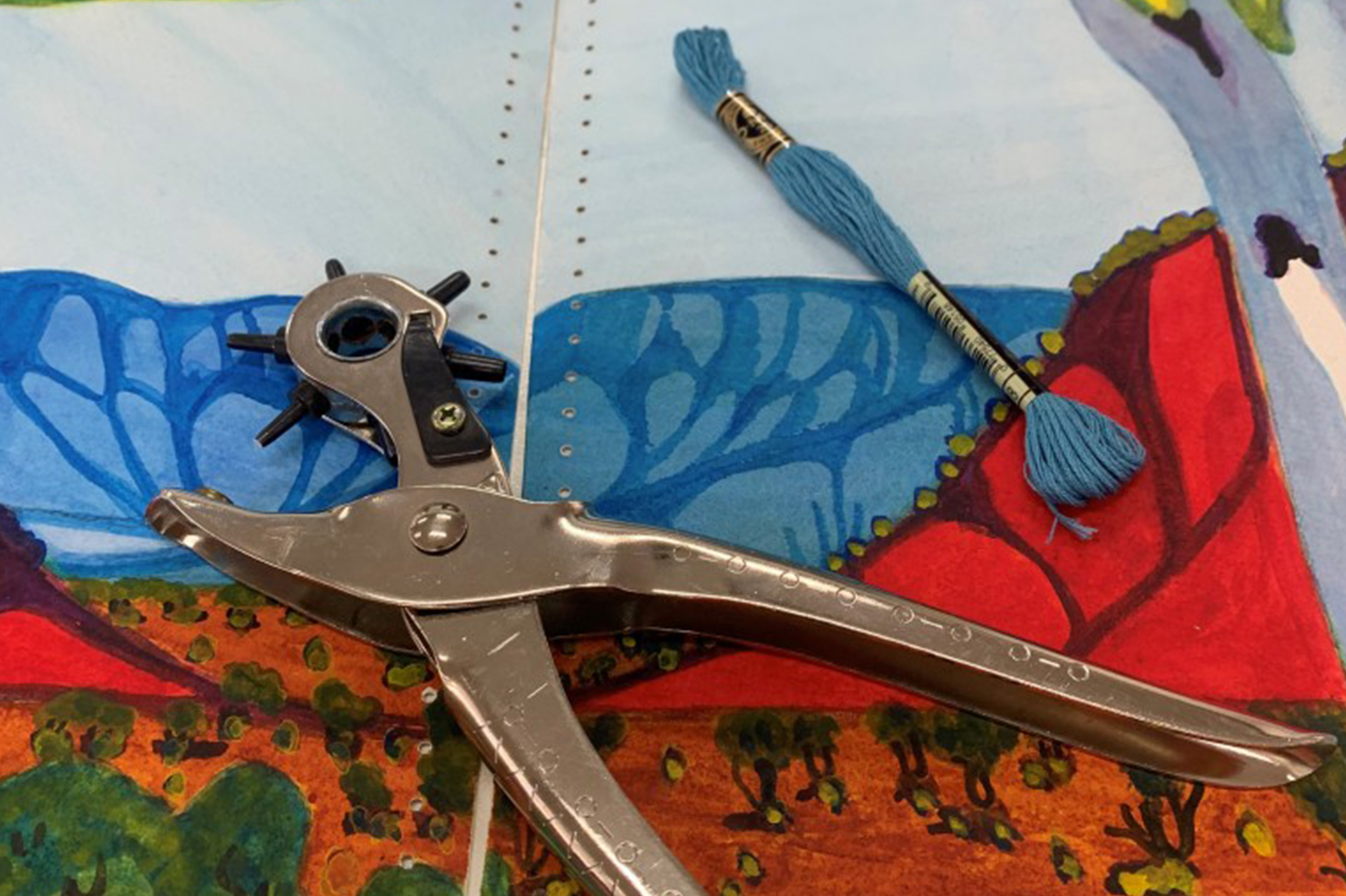

Indigenous artists have combined the ancient and modern to create a stunning exhibition.
Kutja Malla Manyarra, which means “collecting bush foods in cloths”, will be on exhibition in Alice Springs for three weeks.
Watercolour paintings of Central Australian landscapes have been stitched together to form sculptures.
The concept harks back to the days of legendary Aboriginal landscape artist Albert Namatjira.
Batchelor Institute visual arts lecturer Brigida Alberti, who suggested the concept to the nine artists and then mentored them, says the exhibition builds on the extraordinary success of the Circle Skirts art show in 2015-16.
The exhibition of traditional skirts was shown interstate and was eventually bought by a South Australian gallery.
“Women used to gather bush foods in their circle skirts,” Brigida says. “We’ve deliberately gone back to the days of Namatjira in the 1950s.
“The artists are very excited by the exhibition – they love people coming to see their work. They enjoy talking about their memories, about how they were brought up and how different it is for their grandchildren today.
“The art is a lovely, innovative way to bring the old and the new together.”
The artists include several men, including Western Aranda-Luritja artist Hubert Pareroultja, who won the $50,000 Wynne prize for his painting Tjoritja.
Kutja Malla Mantarra will be exhibited at the Raft Art Space in Hele Crescent, Alice Springs, from Saturday, February 27, to March 20.

